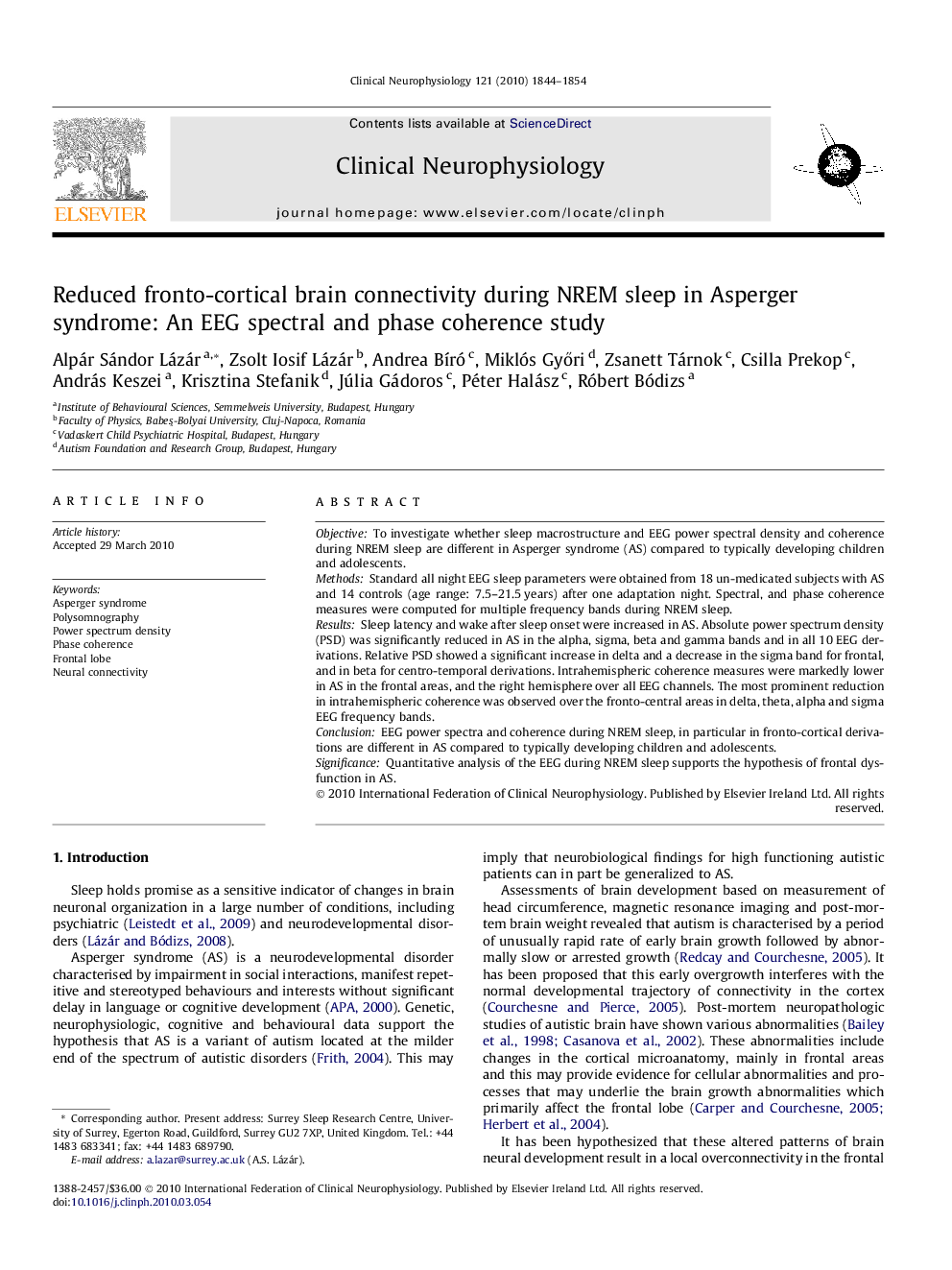| Article ID | Journal | Published Year | Pages | File Type |
|---|---|---|---|---|
| 3044642 | Clinical Neurophysiology | 2010 | 11 Pages |
ObjectiveTo investigate whether sleep macrostructure and EEG power spectral density and coherence during NREM sleep are different in Asperger syndrome (AS) compared to typically developing children and adolescents.MethodsStandard all night EEG sleep parameters were obtained from 18 un-medicated subjects with AS and 14 controls (age range: 7.5–21.5 years) after one adaptation night. Spectral, and phase coherence measures were computed for multiple frequency bands during NREM sleep.ResultsSleep latency and wake after sleep onset were increased in AS. Absolute power spectrum density (PSD) was significantly reduced in AS in the alpha, sigma, beta and gamma bands and in all 10 EEG derivations. Relative PSD showed a significant increase in delta and a decrease in the sigma band for frontal, and in beta for centro-temporal derivations. Intrahemispheric coherence measures were markedly lower in AS in the frontal areas, and the right hemisphere over all EEG channels. The most prominent reduction in intrahemispheric coherence was observed over the fronto-central areas in delta, theta, alpha and sigma EEG frequency bands.ConclusionEEG power spectra and coherence during NREM sleep, in particular in fronto-cortical derivations are different in AS compared to typically developing children and adolescents.SignificanceQuantitative analysis of the EEG during NREM sleep supports the hypothesis of frontal dysfunction in AS.
